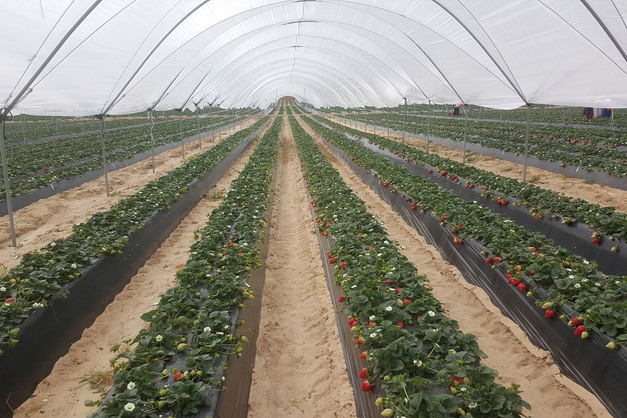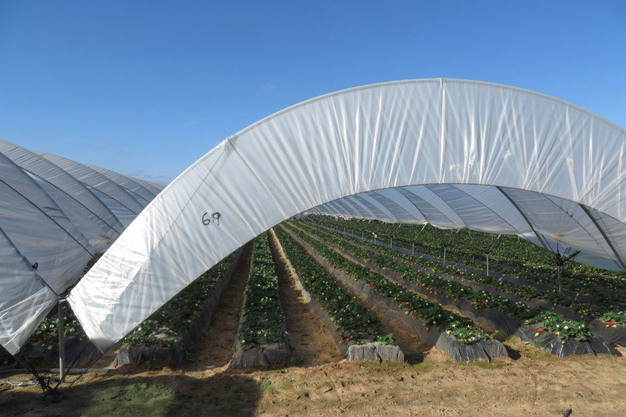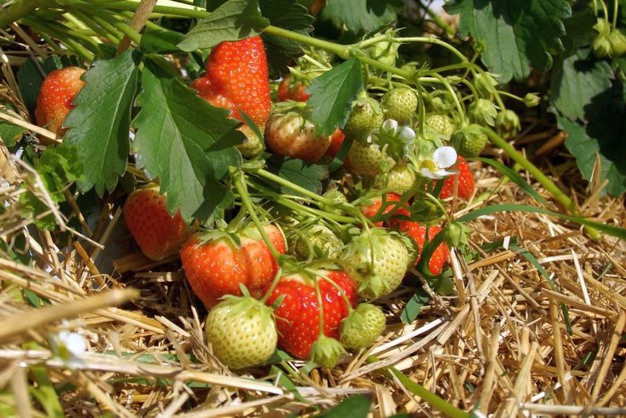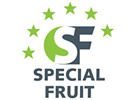December was marked with somewhat less-that-desirable Dutch and Belgian strawberries, and some described Moroccan and Egyptian strawberries' quality as inferior. The market, thus, seems free for Spanish strawberries. Yet there, too, challenges grow annually, particularly regarding weather extremes and water availability. "There's an increasing focus on initiatives that address those issues. This season, though, it's full steam ahead for now," representatives from Belgian importers Van Dijk Foods and Special Fruit agree.

"We got the first shipment of strawberries from Spain in late November/early December, but supplies were quite limited," says Van Dijk Foods' Henk Vlaeminck. It was hot, so hot as to not be conducive to cultivation, during the planting phase, which delayed planting. "That meant we couldn't take advantage of the lower volumes from other origins in the market during those months. Still, early this year, the volumes that came in increased slightly, and by mid-January, our Spanish partners were sending nice amounts."
However, more Dutch and Belgian strawberries are also gradually entering the market. "Those were very expensive around the holidays, but those volumes rose when the new year began, albeit still to a limited extent, so prices have roughly halved. It's, thus, not always easy to compete with the local offerings in those countries, but Spanish prices are excellent. Also, this season, Spanish strawberries' quality is truly top-notch," Henk explains.

"We've had no problems with that, but that's also partly thanks to Spanish growers cultivating increasingly better strawberry varieties with improved quality. Until mid-January, that was primarily Victory, but once Calinda came on the market, we switched almost entirely. In that, there's a genuine change in the landscape. People in Belgium and the Netherlands generally still prefer local produce, but Calindas seems to be a fantastic alternative. They can certainly compete well in other markets."
Dismal December
Polina Valkanova from Special Fruit sees that trend, too. The company works almost entirely with the Calinda strawberries around this time in the Spanish season, but previously also with Victory, Candela, and Arwen. In January, volumes from southern Europe were eagerly awaited. "December was difficult for imported strawberries. Morocco and Egypt didn't have the quality people wanted, so buyers were keen for the Spanish season to begin. As soon as those volumes came onto the market, they were very well received," she says.
Special Fruit's biggest markets are particularly Scandinavia, the Baltics, and the Benelux. "With similar quality, Belgian and Dutch consumers and traders quickly lean toward local strawberries. Nevertheless, Spanish strawberries, especially Calinda, can remain competitive when volumes from the Netherlands or Belgium genuinely rise from mid-April. Despite the difficulty of competing with local produce, certainly in Scandinavia, our customers often remain loyal to Calinda. It appears that's mostly because of the favorable price-quality ratio."
Initiatives to optimize water usage
Spanish strawberries seem to be strengthening their market share, but there are also more and more reports about problems caused by extreme weather in Southern Europe. Water availability constantly threatens crops, and scorching heat rapidly alternates with heavy downpours, which could have major consequences for Spanish horticulture. "Starting volumes are lower than the last two years, and looking at the 10-year average, they're even lower. That's probably due to climate change. Also, higher temperatures and unpredictable weather conditions can affect strawberries' growing, flowering, and harvesting periods. Drought could, for example, affect the season's length," Polina explains.
The issue around water availability is so intense that some Spanish regions may no longer pump water, and German consumer organizations even boycotted strawberries from Andalusia. Nonetheless, Polina does not consider the situation bleak. "It's an acute problem, and growers are eager for future-proof strawberry crops. For example, in response to the growing pressure on water resources, some Spanish growers have invested in innovative watering methods, like drip irrigation, to optimize water use and use available resources more efficiently."

"Our growers farm in the Huelva region benefit from some positive factors supporting strawberry production there. Our company works closely with a carefully selected group of growers who have a 'Spring certificate' or are in the process of obtaining one. These attest to their commitment to sustainability and responsible water management," Polina adds.
"That's crucial given the growing issue of water availability in Spanish strawberry production. Huelva's favorable climate and soil conditions help. That contributes to the more efficient use of water resources. We, thus, expect that, despite a growing problem that we certainly shouldn't underestimate, Spanish strawberry cultivation still has a bright future," Polina concludes, with Henk adding: "It's a sector where there's been a turnaround, and quality prevails. They can hold their own in the market."
For more information:
Polina Valkanova  Special Fruit
Special Fruit
Polina.valkanova@specialfruit.be
www.calinda.eu
www.specialfruit.be
www.fresh-forward.nl
Henk Vlaeminck Van Dijk Foods
Van Dijk Foods
Kempenarestraat 50
2860 Sint-Katelijne-Waver, België
Tel.: +32 15 55 65 61
henk@vdfb.be
www.vandijkfoods.be
